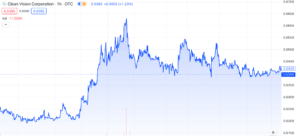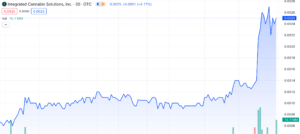Orchard Therapeutics (NASDAQ: ORTX) experienced a remarkable 97% surge in its shares following a major announcement on October 5th, 2023. The renowned global gene therapy leader, Orchard, has been successfully acquired by Kyowa Kirin (OTC: KYKOF), solidifying its position as a fully owned subsidiary.

The Agreement:
The agreement outlines that Kyowa plans to buy all Orchard Therapeutics’ shares at $16.00 per share in cash (totalling about $387.4 million or around ¥57.3 billion) upon closure. This price is a 144% premium to Orchard’s previous value at close on October 4th, 2023.
As part of this deal, Orchard shareholders will receive an additional non-transferable CVR. Holders of the CVR will get a cash payout of $1.00 per share once OTL-200 for treating MLD in the U.S. gains approval.
For those that aren’t familiar, CVR stands for Contingent Value Right. It is a type of financial instrument or contractual right that entitles the holder to a payment or benefit if specific, predefined events or conditions are met. In the context of mergers or acquisitions, CVRs are often used as an additional incentive or compensation to shareholders based on the performance or success of certain agreed-upon benchmarks, such as the approval of a drug, achieving specific sales milestones, or reaching certain financial targets. The CVR allows shareholders to participate in the potential future success of a merged or acquired entity.
Subscribe to Microcapdaily.com Right Now by entering your Email in the box below.
Predicting M&A in Advance:
Now that Orchard has been acquired, it’s probably not in your best interest to be trading it. What’s more important is being able to spot potential merger & acquisitions (M&A) before it happens. While it may seem like a large hurdle, enough research can put you in the right spot at the right time. And if you can do it well, there’s no question you’ll be increasing your earnings. Here’s 3 factors to think about when looking for potential M&A candidates.
1. Misvalued to the Extreme: Celgene’s Journey
Ever noticed how stock prices often have a mind of their own? Let’s talk about Celgene ($CELG), a big shot in the biotech world. Riding high with a super successful blood cancer drug called Revlimid, its stock price shot up from $25 to an incredible $139 between 2010 and 2017. Investors were all in.
But out of nowhere everything shifted. Worries about patents and competition suddenly tanked the stock to $60 within’ just 18 months – the stock had a massive swing in sentiment.
Did the once-celebrated star of the biotech world start hemorrhaging money? Was its revenue in a downward spiral? Far from it… In reality, 2018’s revenue saw only a minor dip from its peak in 2017, all the while the company was generating billions in profit.
Celgene gave it their all, teaming up with respected biotech experts, smart acquisitions of smaller companies with great prospective pipelines – even tried to engage Wall Street Critics, but nothing worked.
This twist in fortune caught the eye of Bristol Myers Squibb (NASDAQ:BMY), a company that values stability over trends. The lowered value of Celgene became a golden opportunity for them. They swooped in, acquiring Celgene, and securing promising assets. This stock market tale is a reminder that timing and how people perceive a situation can flip stock fortunes.
2. Great Science, but Lacking Funding:
Ever thought that a groundbreaking medicine should automatically become a hit? Turns out, it’s not that simple. Bringing a new medicine from idea to people’s medicine cabinets is like running an obstacle course. Yes, having solid science behind it is crucial, but that’s just the beginning. The American healthcare system has its quirks. Insurers need to give a nod, hospitals need to adapt to new methods, and doctors need to be convinced.
This process costs a lot of money—hundreds of millions, even a billion dollars—after all the scientific tests are done.
When you come across a small company that’s shown promising results in phase 2 or even phase 3 trials for a new drug, it’s time to dig into the numbers and dive into their financials. Check their balance sheet and cash flow. If financial jargon isn’t your strong suit, focus on a crucial question: “How fast are they spending their cash each quarter?” For instance, if they’re burning around $25 million per quarter and they only have $75 million left in the bank, alarm bells should ring.
Despite good results, a lack of funds could lead their breakthrough drug to end up in the trash bin. Smart financial moves are essential for turning promising data into real-world medical solutions.
This is where M&A steps in. Big pharma companies, with their knack for navigating red tape, join forces with agile biotech firms. M&A acts like a connector, ensuring innovative medicines actually reach the people who need them.
3. Key Shareholder: End of Career or Fresh Start?”
In the world of biotech, M&A isn’t just business—it’s about people and their journeys. Some founders, after years of battling the unpredictable industry, choose acquisition to secure their life’s work. On the flip side, young, ambitious founders, full of ideas, might be tempted by big corporations promising vast resources.
It’s not uncommon for a biotech company with a promising phase two product and solid data to command a valuation as high as $500 million. At this stage, the founding team has likely toiled in relative obscurity for years and looked to investors to fund their ambitious biotech endeavors.
Retaining majority control as a founder throughout product development is rare due to exorbitant costs. But the founder, or founding group, could retain around 5 to 10% of the company’s shares, possibly making them the largest and most influential shareholders. Hence, if Pfizer proposes to acquire the company for $500 million, that’s $50 million for the 67 year old scientist founder, who might just be tempted to take the giant payout and move to Bora Bora.
Another scenario involves young, inexperienced scientist-founders. This may seem counterintuitive; shouldn’t youth embody boldness?
Sometimes, these founders insist on going all the way. Yet, their inexperience can make them vulnerable to sophisticated corporate pitches. They’re promised abundant resources, a worry-free life, and a chance to change the world by teaming up with a giant like Pfizer.
Despite the allure, merging with massive corporations often stifles once-independent entrepreneurs. Ask anyone who’s sold their company to a corporate behemoth – it often isn’t conducive to the flourishing of once-autonomous entrepreneur.
Conclusion:
These tips can be crucial in spotting potential biotech takeovers, but there are still other factors to consider when piecing everything together. Even then, there’s no guarantee of a surefire deal. But if you make smart, educated guesses with thorough research, you can reap substantial returns – a little luck doesn’t hurt either.
Subscribe to Microcapdaily.com Right Now by entering your Email in the box below.
Disclosure: We have not been compensated for this article/video. MicroCap Daily is not an investment advisor; this article/video does not provide investment advice. Always do your research, make your own investment decisions, or consult with your nearest financial advisor. This article/video is not a solicitation or recommendation to buy, sell, or hold securities. This article/video is our opinion, is meant for informational and educational purposes only, and does not provide investment advice. Past performance is not indicative of future performance.
Picture by Aymanejed from Pixabay

 Uncategorized3 years ago
Uncategorized3 years ago
 Micro Cap Insider4 years ago
Micro Cap Insider4 years ago
 Media & Technology5 years ago
Media & Technology5 years ago
 Featured2 years ago
Featured2 years ago
 Media & Technology4 years ago
Media & Technology4 years ago
 BioPharma4 years ago
BioPharma4 years ago
 Uncategorized3 years ago
Uncategorized3 years ago












OnkelSam
January 21, 2015 at 4:05 pm
TRTC Proven Executives Enrichment Scam Scheme !
de.advfn.com/forum/advfn/15690837/1
.